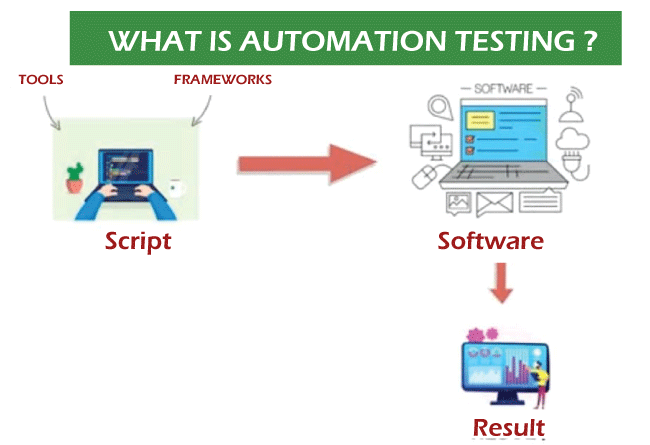Just How Automation Testing Changes Quality Control Processes
Just How Automation Testing Changes Quality Control Processes
Blog Article
Making Certain Success in Automation Checking: Key Metrics, Difficulties, and Solutions Every QA Team Ought To Know
In the realm of software quality assurance, the landscape of automation screening is ever-evolving, requiring a thorough strategy to ensure smooth procedures. The trip to grasping automation testing is paved with nuances that require a keen eye for monitoring, evaluation, and continual enhancement. As the market moves forward, the mission for ideal performance in automation screening stays a continuous pursuit, prompting QA groups to equip themselves with the knowledge and approaches crucial for victory.
Significance of Key Metrics
Comprehending the importance of key metrics is essential for reviewing the performance and effectiveness of automation screening processes. Trick metrics work as measurable procedures that offer beneficial understandings into numerous aspects of the screening process, such as test protection, test implementation time, problem thickness, and test instance effectiveness. By assessing these metrics, QA teams can identify bottlenecks, inefficiencies, and locations for improvement within their automation screening structure.
One important aspect of crucial metrics is their ability to track development and monitor the general wellness of the testing procedure (automation testing). They make it possible for stakeholders to make educated choices based on data-driven understandings, which can lead to a lot more efficient testing approaches and better source allocation. Furthermore, key metrics can assist groups set reasonable objectives, gauge the success of automation initiatives, and demonstrate the ROI of automation screening initiatives

Usual Obstacles Faced
Obstacles commonly encountered in automation screening processes can considerably influence the general efficiency and efficiency of QA teams. Among the significant challenges is the choice of the best examination instances for automation. Not all test situations are suitable for automation, and picking the wrong ones can lead to lost time and resources. Furthermore, keeping examination scripts can be an overwhelming task, especially as the application goes through frequent changes. Test script maintenance calls for continuous updates and alterations to ensure they show the current functionality precisely. An additional common obstacle is the initial investment needed for setting up automation structures and tools. This can be an obstacle for some companies, especially smaller sized ones with minimal budget plans. Automation testing may not cover all facets of screening, such as functionality and customer experience screening, which still require hands-on treatment. Overcoming these challenges needs appropriate preparation, strategic test situation choice, robust maintenance procedures, ample sources, and a clear understanding of the limitations of automation testing.
Efficient Solutions for Difficulties
To attend to the challenges experienced in automation testing, applying efficient services is important for enhancing the performance and efficiency of QA teams. One key remedy is to buy robust training programs for QA teams to guarantee they have the essential skills to properly make use of automation devices. Training can bridge expertise spaces, improve understanding of automation structures, and improve scripting abilities, ultimately bring about much more efficient examination creation and implementation.
Another crucial solution is to develop clear communication networks within the QA team and with various other stakeholders, such as developers and job supervisors. Reliable communication aids in lining up assumptions, sharing development updates, and without delay attending to concerns or obstructions that might occur throughout the automation testing process.

Surveillance and Analysis Strategies
Implementing reliable surveillance and analysis techniques is critical for making sure the success and effectiveness of automation screening procedures. By utilizing tracking tools, QA groups can track the performance of test scripts, identify traffic jams, and identify locations for enhancement. Real-time monitoring enables quick discovery of problems, enabling quick reaction and resolution. In addition, evaluating examination results and metrics this provides useful insights into the top quality of the software application being tested and the efficiency of the screening technique.
One key method in surveillance and analysis is using control panels that settle relevant metrics and KPIs in a visually easily accessible layout. These dashboards provide a detailed overview of test implementation condition, test insurance coverage, issue trends, and other vital details. Routinely evaluating and examining these control panels can aid QA great site groups make educated choices, focus on jobs, and maximize screening initiatives.
In addition, implementing automated alerts and notifications based on predefined thresholds can enhance proactive monitoring and timely treatment. By establishing up signals for performance deviations or test failings, groups can resolve concerns immediately and avoid them from intensifying. In general, monitoring and analysis strategies play an essential duty in making certain the efficiency and success of automation testing initiatives.
Continuous Renovation Approaches
Enhancing the efficiency of automation testing procedures necessitates the constant refinement of methods and methodologies. One crucial approach to improving automation screening processes is to carry out normal reviews and retrospectives.

Conclusion
Finally, it is essential for QA groups to comprehend the key metrics, obstacles, and services in automation screening to make sure success. By thoroughly monitoring and examining data, applying effective remedies to typical obstacles, and constantly boosting techniques, QA groups can optimize their screening procedures and provide high-grade software. Following these methods will inevitably result in extra reliable and efficient automation screening techniques.
By analyzing these metrics, have a peek at these guys QA groups can recognize bottlenecks, ineffectiveness, and locations for improvement within their automation testing structure.
In addition, essential metrics can assist groups established realistic goals, determine the success of automation campaigns, and show the ROI of automation testing efforts.
Difficulties generally encountered in automation testing processes can dramatically impact the overall effectiveness and efficiency of QA groups. Automation screening might not cover all facets of testing, such as usability and user experience testing, which still need hands-on treatment.In verdict, it is critical for QA groups to recognize the key metrics, challenges, and services in automation screening to make sure success.
Report this page